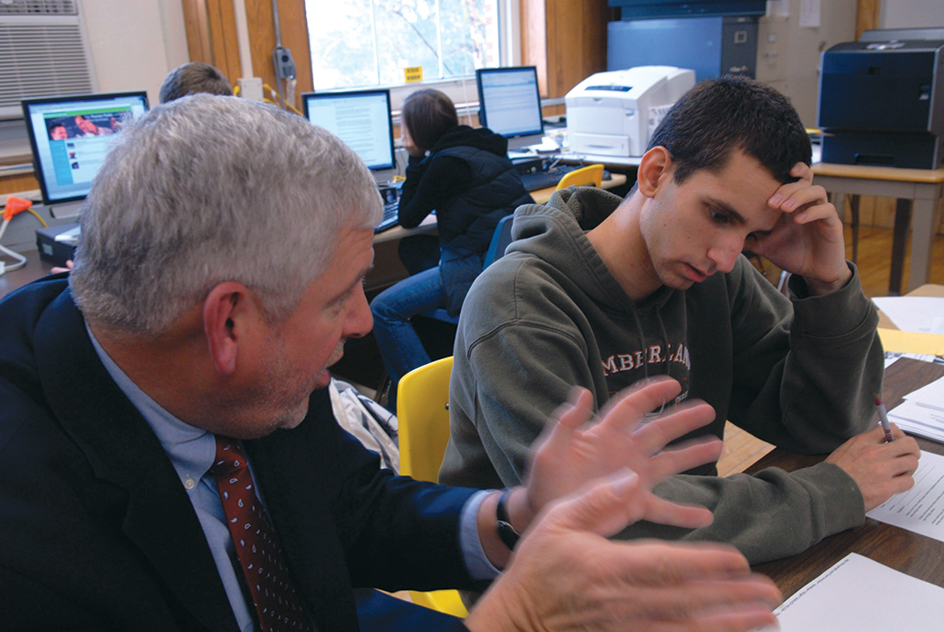Guidance, in education, is the process of helping students make the best possible decisions about their lives. It is used at all educational levels from grade school through college. Guidance helps students understand themselves by focusing attention on their interests, abilities, and needs in relation to their home, school, and community. Guidance also helps students develop decision-making abilities that they can use to plan their education, choose an occupation, and solve personal problems. To make wise decisions, students must have full and accurate information about themselves and their world. The major goals of guidance are to help students identify and obtain information they need and use it effectively to make the best decisions possible.

Many people contribute to the guidance of students. Some schools have specially trained counselors who lead the guidance program. Parents, teachers, and community representatives also contribute to the process.
There are a wide variety of guidance techniques. For example, counselors often conduct workshops that help students improve their communication skills, decision-making abilities, temperament, or job search skills. Other techniques include testing students for skills and interests and providing vocational information and planning. Many schools use computers, simulations, and audio-visual devices to convey guidance information to students.
Most guidance programs are made up of three major areas: educational, vocational or career, and personal-social. These areas overlap, and a decision made about one almost always affects the other two.
Educational guidance
usually starts with helping students learn which courses the school offers. Guidance also involves helping students decide what courses to take or what curriculum to follow. This decision is often difficult for junior high school or high school students. It is difficult because the pattern of courses students choose and their success with them create some future opportunities but eliminate others. Most students must decide whether to choose a curriculum or pattern of courses that will permit them to attend college or some other form of higher education, or to go directly to work. Such choices often involve decisions about personal values and financial resources.
The choice of courses also depends on other factors. Some students do not have the abilities or interests that will enable them to succeed in every course a school has to offer. Each course makes different demands on the student. Educational guidance uses a combination of counseling, testing, and other techniques to help students make educational decisions and solve problems.
Vocational or career guidance
is closely related to educational guidance and uses many of the same methods. But vocational or career guidance is concerned mainly with the student’s choice of a future career. It helps a student understand how jobs or occupations differ, what job opportunities are emerging, and which jobs best fit the student’s abilities, values, and interests. Vocational or career guidance also makes the student aware of the types of education and training needed to be successful in a chosen career. It also helps the student understand the relationships between work, family roles, and leisure. In addition, vocational or career guidance is concerned with helping students learn good interviewing skills and positive work habits.
Personal-social guidance
is often related to educational and vocational guidance, but may emphasize areas that they do not. For example, personal-social guidance stresses interpersonal skills more than educational or vocational guidance do. Personal-social guidance may be designed to help students deal with a variety of problems. These problems include effective communication with other family members, mental health problems, anxieties about tests, and management of stress. Techniques used in personal-social guidance may include individual and group counseling and referrals to community agencies.
See also Counseling .
